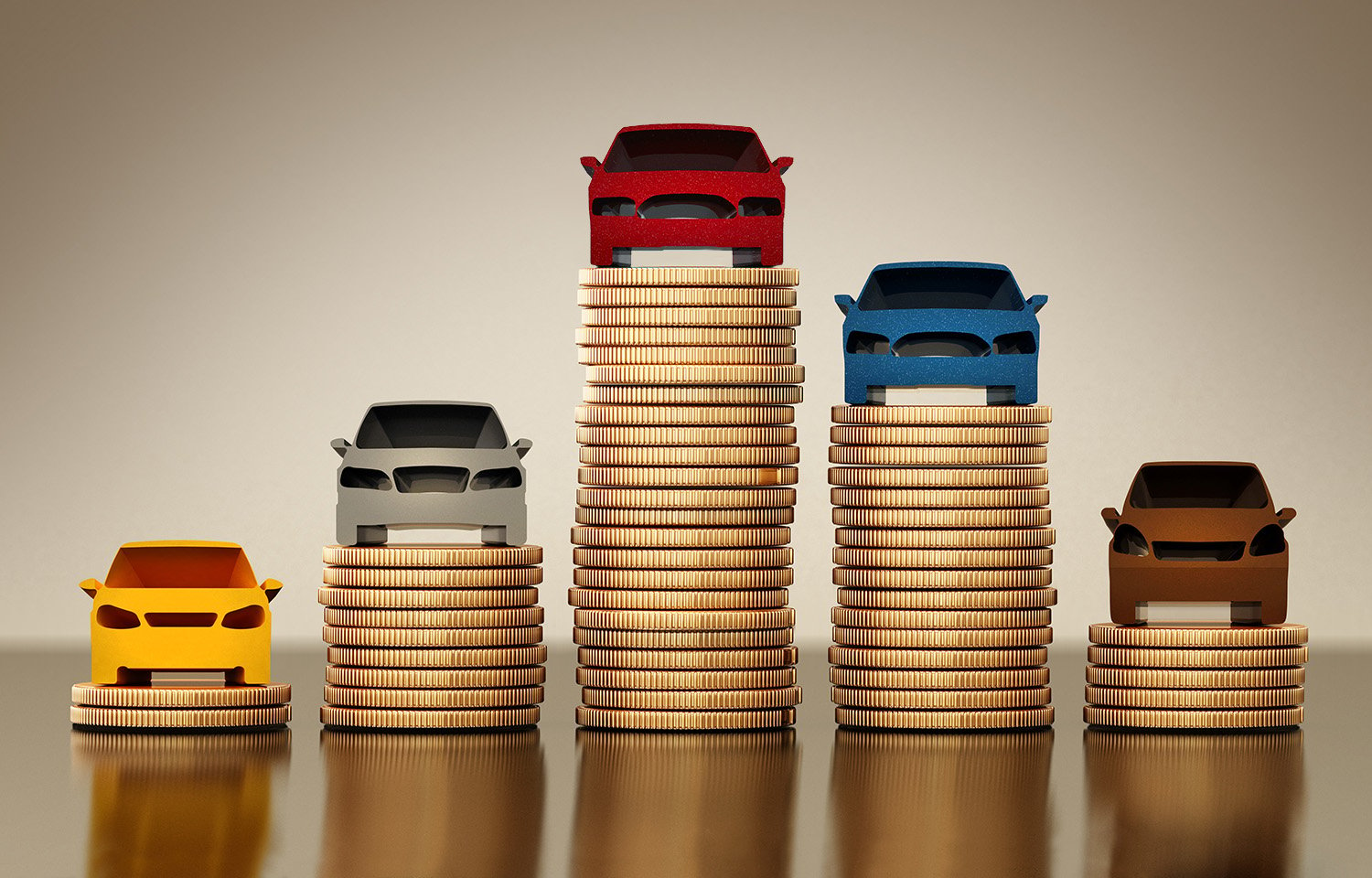S h a r e
Cash takers – why is it costing you money?


Posted by
Martin Brown
February 2021
Cash versus company car remains a key debating point in fleet policy for many companies. Is it financially better to offer employees a cash alternative so they can sort out a car personally? Or is it better for both parties – employer (duty of care) and employee (employment benefit) – to keep them within the company car system?
For some, it very much depends on personal circumstances. It can be that the taxation cost versus benefit ratio is out of kilter, or that the company is changing its policy and wanting to divest itself of its fleet.
But I have to say, I was rather shocked to see this bit of evidence – unearthed by the BVRLA in an excellent Company Car Report – that 45% of cash takers pay more for their car than their allowance.
So just to get this right in my head: it’s costing employees their own money to opt-out of the company car scheme. Seems bizarre, mad even.
OK, I do understand that there might be the opportunity to use the monthly allowance – ranging between £300-£600 per month on average according to the report – plus your own money to upgrade to a car that’s always been on a wishlist. And nothing wrong with that.
There are also changes in personal circumstances that might warrant taking the cash. The Company Car Report offers the case study of ‘Jane’, a Client Services Director, whose company car lease came to an end during Lockdown 1.0. With the reduction in the need for travel that the lockdown entailed, Jane made the decisions that it was more cost-effective to take a cash allowance instead of a company financed car, especially as she saw no real requirement for a car currently – but she has the ability to opt back into the company car scheme when she wishes.
Drivers – save yourself some money and take the company car
In my view, taking the cash makes little sense, especially since the company car tax rates were changed in April 2020 to favour the uptake of zero and ultra low emission vehicles.
The opportunities for former company car drivers to opt back into the company car are provided by the very thing – the benefit in kind tax – that drove many away from the company car to take the cash.
So now is the time to consider reversing the process – and giving yourself a potential increase in take-home pay. Here are some examples for you to consider. We’re going to take a basic rate taxpayer driving an Audi A3 hatchback to start with and whether they would be better off swapping to an electric MINI.
The profile we have worked on is over three years on a 3+33 at 10,000 miles a year, of which 5,000 are for business. So let’s have a look.
Changing from Audi cash opt out to MINI electric company car

Audi A3 30 TFSI Technik 5dr S tronic Hatchback
Key details: £24,620, 1 L, Petrol, Automatic, 124 g/km, 51.4 mpg, 110bhp
Our opted out driver has chosen to drive an Audi A3 hatchback. The allowance they receive is £275 net of tax and NIC, which assumes their company has provided them with a gross cash allowance of £405 per month. However, to personally lease the Audi on a fully maintained personal contract hire (PCH) agreement, and with insurance on top, costs £378 per month. So like many of the drivers surveyed by the BVRLA, this driver has to contribute an additional £103 each month to get into this car via PCH. Would the driver be better off in a company car?
Currently, Audi doesn’t provide an all-electric car in this hatchback sector, so we’ll take a look at the MINI Hatchback electric.

MINI Hatchback 135kW Cooper S 1 33kWh 3dr Auto Hatchback
Key details:£28,045, Electric, AFQ, Automatic, 0 g/km, 184 bhp, Hatchback, 145 EV miles
The cost for an employer to provide this vehicle to the driver on a fully maintained lease is £405 per month, inclusive of the irrecoverable VAT and insurance. So the driver coming back into the company car system would give up the £405 lease cost by foregoing their cash allowance, which comes down to a net cost after income tax, NIC and BIK tax of £280 per month.
If we go back to the Audi for a minute, this was costing the driver £378 a month, so the net saving by taking the electric MINI is £98 per month, and the driver receives a fully maintained company car while reducing their own personal credit risk exposure.
Let’s look at a higher rate taxpayer – is the company car or the cash best?
In many ways, it’s easier to move senior managers back into electric company cars, simply because there has been a greater availability of executive EVs from which to choose, and the savings in company car tax are significant.
So for this example, we’ll take a higher tax rate senior manager who drives a rather plush Mercedes-Benz saloon on a cash allowance and see if they would be better off in an electric Tesla Model 3.
Changing from Mercedes cash opt out to Tesla electric company car

Mercedes C220d AMG Line Edition 4dr 9G-Tronic Saloon
Key details: £39,730, 2 L, Diesel RDE 2, Automatic, 134 g/km, 55.4 mpg, 194bhp
Although this diesel is RDE 2 compliant and therefore escapes the 4% diesel surcharge for benefit in kind tax, the driver has gone for a cash allowance which nets out after income tax and NIC at £365 per month.
Still, the Mercedes costs £598 per month to run on a fully maintained personal lease, including insurance, which leaves the driver short by £233 a month, which has to be contributed towards the running of the car. Once more this driver very much fits the picture the BVRLA has identified of cash takers contributing towards their opt-out car. So, would the driver be better off in an electric Tesla instead? Let’s have a look.

Tesla Model 3 Long Range AWD 4dr Auto Saloon
Key details: £49,935, Electric, AFQ, Automatic, 0 g/km, 351 bhp, Saloon, 360 EV miles
For the driver’s employer to lease the Tesla Model 3 Long Range on a business lease with maintenance costs £630 per month, inclusive of the irrecoverable VAT and insurance. So the driver forgoes the cash allowance of £630, which nets out at £382 a month. This latter figure includes all the tax and the NIC saved on the cash that has been given up, as well as the minimal BIK on the Tesla company car.
Going back to the driver’s current Mercedes, this costs a total of £598 to run personally or £216 more per month than if the driver were in a brand new company-provided Tesla that was being paid for with someone else’s money. The answer, then, for this executive, is to give up, or indeed sacrifice, the cash allowance and go back to the company car and choose the electric Tesla.
So should drivers give up the cash?
From our two examples, it’s clear that taking the company car is the most cost-effective option for the driver. The very low rates of company car taxation on zero-emission cars have been a real game-changer for fleets and their drivers.
Where the cash opt-out had been the preferred option, particularly for senior executives in high-end cars, has now been made history by the April 2019 introduction of the 0% tax rate for EVs.
So why are those 45% of cash takers identified in the BVRLA report paying towards their cash allowance cars?
Why, when you could have a fully maintained company car – and keep money in your pocket?
Like I said, makes no sense. So: drivers, review your position now and save money; and fleet controllers look to change your car policies, and save on NIC costs.
You also might like…
If you liked this article then check out our posts about similar topics
First Drive: Why Audi’s Q4 e-Tron matters
The Company Car Sweet Spot for future-proofing your Fleet An Audi badge says professional without drifting into show-of...
First Drive: Jaecoo 7 – Range-Rover Looks on a £30k Budget
Why this newcomer matters China’s Chery Group is taking the UK by storm with a two-brand strategy: Omoda targets mains...
Good-enough lease rates aren’t good enough anymore: Introducing Multi-Bid Tendering
In a climate of persistent inflation, unpredictable tariffs and relentless cost pressure, “we’ve always done it this...
Become a Fleet Alliance business partner
I am writing to you about the opportunity to become a business partner of Fleet Alliance The commercial arrangement a...
Charting a Greener Course: Chris Rowthorn signs the Business Wales Green Growth Pledge
When seasoned automotive finance professional Chris Rowthorn left MotoNovo after more than two decades to become a Flee...
Outsourcing Your Fleet: 10 Reasons Fleet Alliance Makes Perfect Sense for Busy Fleet Managers
Running a large corporate fleet means you’re under constant pressure to hit cost, compliance, and sustainability targe...
What makes Fleet Alliance a winner in the SME fleet sector?
We all like an award, an additional trophy for the cabinet - the recognition is important and it’s always good to rece...
10 great cars to have on salary sacrifice 2025
Employers and employees are really catching on to salary sacrifice because you can drive a brand new electric car (EV) a...
Ready to make the management of your fleet more efficient?
Request a call back
